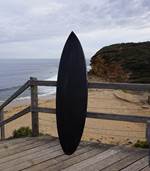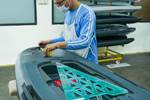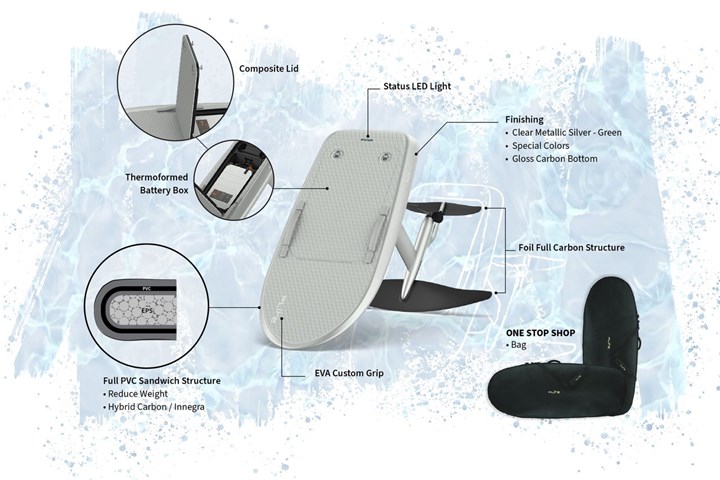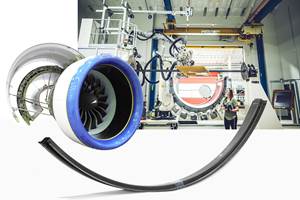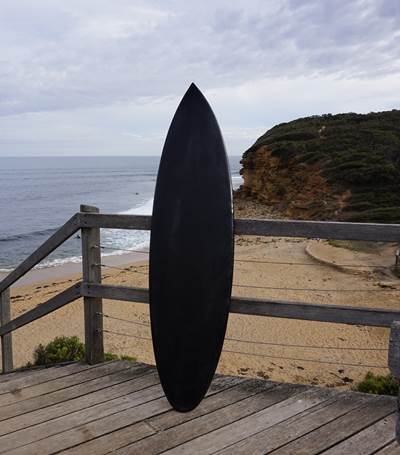Cobra International supports composite electric hydrofoil board evolution
Cobra continues to deliver materials, production process support, as well as manufacture Fliteboard’s carbon fiber Fliteboard Series 2 surfboards.
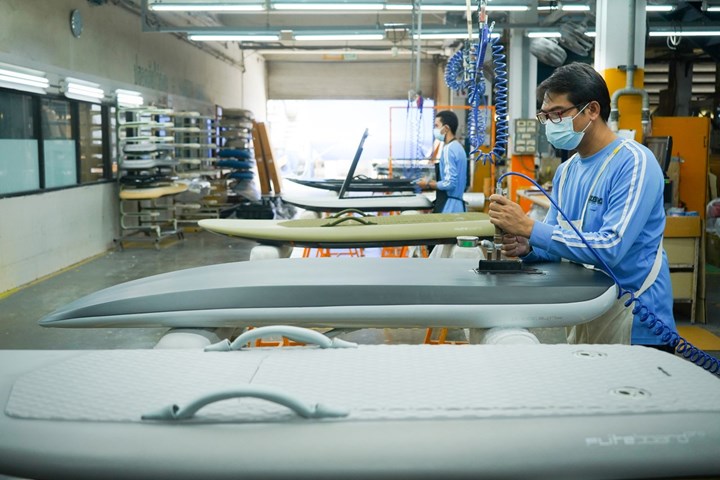
Fliteboard Series 2 electric foiling surfboards. All photo credit: Cobra International, Fliteboard
Cobra International (Cobra, Chonburi, Thailand) an OEM manufacturer of composite goods for water sports, automotive, marine and civil engineering, has confirmed its continued partnership with (Heemstede, the Netherlands), the builders of the new composite Fliteboard Series 2. Conceived in 2016, the Fliteboard range of electric foiling surfboards have reportedly established a strong position in the eFoil market. In early 2021, Fliteboard announced a package of evolutionary improvements to the original award-winning design for which Cobra has installed significant additional manufacturing capacity.
Cobra says it has been involved with the production of Fliteboards since 2018. The company has provided materials and production process support through prototyping, as well as production and delivery of the boards and accessories, including the manufacture of the new Race, Flow and Cruiser wings and stabilizers (to tune the board’s handling) for the Series 2 boards, and the padded wing bags to protect the carbon fiber blades.
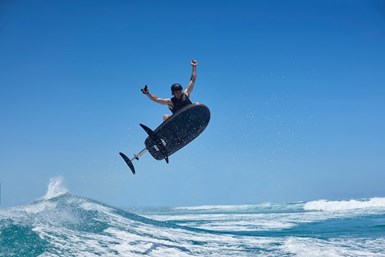
With Fliteboard growing rapidly, and thousands of boards now delivered across more than 80 countries, Cobra continues to support Fliteboard with additional molds and lean manufacturing production lines added to reduce customer lead times and build up stocks of the new boards across Fliteboard’s expanded dealer network. In addition to this production capacity expansion, Cobra reports that it has successfully met the technical challenges set by the Fliteboard team to incorporate all new Series 2 board features into the existing production processes.
Fliteboard’s first composite models used a carbon fiber and Innegra sandwich laminate over a molded EPS foam core, combining maximum strength, stiffness and durability with a low overall board weight. The same construction concept is used for the Series 2 boards, Fliteboards say, with several new finishes added to the range along with lighter color-matched EVA deck pads and upgraded latches on the carbon fiber board lid. New wood grain and metallic paint finishes have been introduced with Cobra’s semi-transparent paint system used to save weight and display the hexagonal weave pattern of the carbon and Innegra reinforcement fabrics.
Some less visible updates for 2021 are just as important as the styling refinements, Cobra notes. The company says it is working with Fliteboard to adapt the board manufacturing process to simplify Fliteboard by removing all electronic systems from the board, and to incorporate Fliteboard’s patent-pending wireless connectivity improvements that enable radio frequency (RF) signals to travel easily through the board to the Flitebox. All of these new features, and the new integrated lightbar located in the nose of the board, are said to provide the rider with enhanced control, system information and a more seamless on-the-water experience.
Also new for 2021, is ULTRA, Fliteboard’s smallest and lightest model with a volume of only 54 liters. Designed to offer next-level performance for advanced riders, ULTRA is said to be the only entirely new board shape in the Series 2 lineup. Fliteboard says ULTRA’s reduced length and swing weight provide more maneuverability when riding waves, and with the optional foot strap, make jumps and aerial tricks possible. The new ULTRA model is built on the same production lines as the existing models and is available in black or silver color finishes.
Related Content
Welding is not bonding
Discussion of the issues in our understanding of thermoplastic composite welded structures and certification of the latest materials and welding technologies for future airframes.
Read MoreCarbon fiber, bionic design achieve peak performance in race-ready production vehicle
Porsche worked with Action Composites to design and manufacture an innovative carbon fiber safety cage option to lightweight one of its series race vehicles, built in a one-shot compression molding process.
Read MoreOtto Aviation launches Phantom 3500 business jet with all-composite airframe from Leonardo
Promising 60% less fuel burn and 90% less emissions using SAF, the super-laminar flow design with windowless fuselage will be built using RTM in Florida facility with certification slated for 2030.
Read MoreThe potential for thermoplastic composite nacelles
Collins Aerospace draws on global team, decades of experience to demonstrate large, curved AFP and welded structures for the next generation of aircraft.
Read MoreRead Next
Australian start-up builds first recycled carbon fiber composite surfboard
Juc Surf uses 100% recycled carbon fiber scrap materials for a more sustainable surfboard that doesn’t sacrifice performance.
Read MoreCobra International rapidly scales up Radinn glass fiber electric surfboards
Cobra manufacturing platform to deliver 300 composite boards per month, with 25% weight savings, tight tolerances, detailed QC and documentation records.
Read MoreCutting 100 pounds, certification time for the X-59 nose cone
Swift Engineering used HyperX software to remove 100 pounds from 38-foot graphite/epoxy cored nose cone for X-59 supersonic aircraft.
Read More
